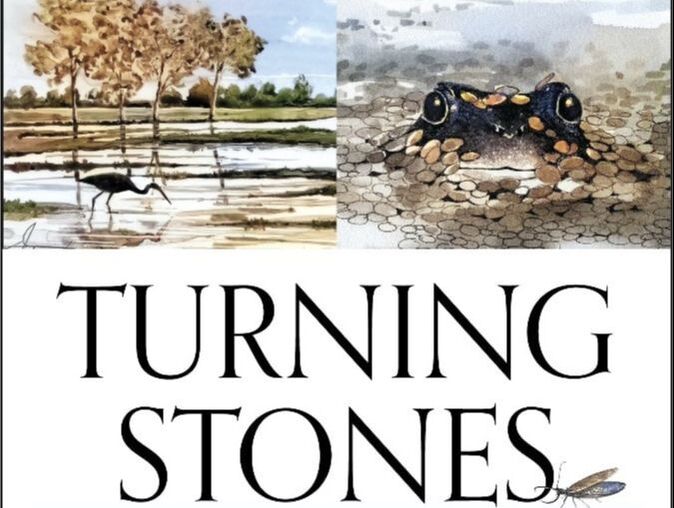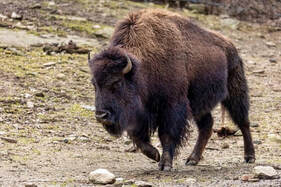 Photo By: Jack Bradley Photo By: Jack Bradley Written By: Andrew Connolly When you think of the United States of America and its conservation legacy, what might come to mind? Is it the sprawling forests that used to cover the east coast? Is it the passage of the Endangered Species Act 50 years ago? Could it perhaps be the long and complicated story of the American Bison, the peoples of the nation, and the path to national mammal status? The American Bison, a species so special and unique that its scientific name, Bison bison, already demonstrates how unique of an animal it is. American Bison used to range from Alaska down to the Mexican border, and from the Nevada Basin to the eastern Appalachian Mountains[1]. So how did a species that numbered in the millions, and spanned almost an entire continent come close to extinction and then come back again? It took great loss and pain, followed by a period of education, growth, and activism for education, activism, and cooperation pave the path to success and growth. To learn more about this path, the United States of America must also confront its dark past with colonization.  Photo By: Jack Bradley Photo By: Jack Bradley When European settlers arrived, they found a land home to hundreds of tribes and millions of indigenous persons. When the United States sought to expand westward and to eventually connect the nation by railroad, the United States military began a campaign to remove these persons from the land. A population of 30-60 million American Bison provided a wide variety of resources to these tribes, with many relying on bison for most of their food, as well as skins and pelts for clothing and shelter, bones for tools and jewelry, horns for tools, and more. The American Bison was also a significant cultural and religious figure, a part of their history. To many of the indigenous people of the interior United States, the American Bison was their way of life, and key to their survival. The military would target the herds of American Bison, killing and burning the Bison by the tens of thousands, working to starve or displace the families who relied on them for their survival. Local governments would place bounties on the animals, and some, like “Buffalo” Bill Cody, would kill thousands a year[1]. By 1883, less than 1,000 of the mighty animals remained[2], with so many slaughtered that some estimates go down to just 300 American Bison remaining[3]. This vast devastation would leave a continent of persons changed forever, and an entire species hanging on by just a breath. It would take the turn of the century, and changes in attitudes towards animal conservation, to lead to efforts to restore the American Bison, though the impacts of its loss would be felt by indigenous persons, and ecosystems for decades, many still felt to this day. By working to conserve the species in protected areas, like Yellowstone National Park, the population has slowly risen to half a million individuals today, with a Near Threatened, Critically Depleted IUCN Red List, Green List status[4]. The IUCN, or International Union for Conservation of Nature assesses species conservation status and how their populations are changing over time, a valuable tool for conservation work like that on the American Bison. At just a fraction of its native population and range, however numbers greater than at its low, the American Bison recovery shows the impact conservation action can have and tells a story of grappling with a difficult past. The American Bison would become the National Mammal in 2016 under President Obama, and National Bison Day celebrates this majestic animal the first Saturday of November. Take the time this week to visit the zoo, to learn about the American Bison, and to educate yourself about the role of the American Bison in indigenous communities. [1] https://www.pbs.org/buffalowar/buffalo.html [2]https://www.nps.gov/articles/bison-bellows-1-7-16.htm#:~:text=Historical%20records%2C%20although%20sometimes%20disputed,to%20the%20eastern%20Appalachian%20Mountains. [3] https://www.nps.gov/subjects/bison/people.htm [4] https://www.iucnredlist.org/species/2815/123789863
0 Comments
Leave a Reply. |
Archives
July 2024
|
Connecticut’s Beardsley Zoo is dedicated to acquainting a diverse public to the delicate balance that exists between living things and their environment.
Connecticut's Beardsley Zoo is a 501(c)(3) not for profit owned and operated by the Connecticut Zoological Society.
Connecticut's Beardsley Zoo is a 501(c)(3) not for profit owned and operated by the Connecticut Zoological Society.
© 2022 Connecticut's Beardsley Zoo

 RSS Feed
RSS Feed





